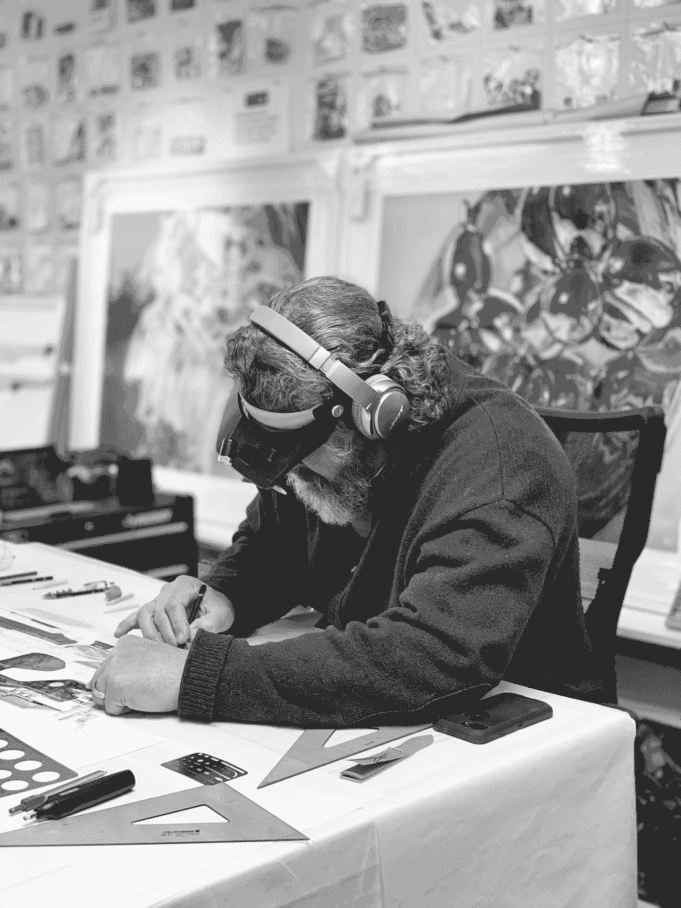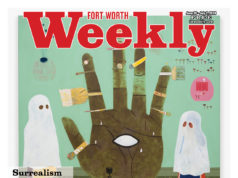Established art galleries are often tasked with turning a profit while serving the greater arts community. Since opening in early 2016, Fort Works Art has hosted numerous charitable events while simultaneously luring customers. Last summer, owner Lauren Childs decided to split those tasks by adding a nonprofit component, Gallery of Dreams, to her business.
“When I first started Fort Works Art, everything we did was basically nonprofit” in nature, she said, referring to the years of pop-up shows before her current brick-and-mortar location just south of the Cultural District.
When her current gallery opened, there were bills to be paid and staff to be hired. The financial realities meant quickly adapting a profit-driven business model, but Childs continued providing her space to high school art shows and charitable events while hosting and underwriting the annual Betsy Price Art Competition for local teenagers. Hosting and organizing those events came at a cost, Childs said, but her biggest motivation for forming Gallery of Dreams last summer was to realize a longtime dream of having a gallery-based artist residency program in Fort Worth. After forming a nonprofit board and finding a handful of initial donors, Childs was able to offer local graphite artist Marshall Harris a space (previously a gallery wing on the upper level of Fort Works Art) to work in for one year. Harris is known for his sprawling photorealistic drawings and installation artworks. The new space allows him to work outside the confines of his home.
The residency program, Harris told me in an email, gives artists two important resources: space and time.
“With a dedicated studio to work in as well as [the benefits of] focused time, an artist can achieve work that would otherwise take years to accomplish,” he said. “This residency has moved my practice light years ahead of where it would have been” without it.
Having Harris around has livened up the gallery space, Childs said. Visitors have the opportunity to interact with the veteran artist, who spends a few hours most days working at the residency space. There’s a huge need for residency programs, Childs said, adding that she plans to explore ways to expand the program to workspaces outside the gallery in the coming years if she can find funding.
Recent shows such as 100 for 100, which featured $100 artworks from 100 artists, fall under the Gallery of Dreams banner, Childs said, because the aim of the show was primarily to give young artists a “white wall art gallery” experience.
“We’re probably only selling 25 percent of that show,” Childs said. “When I was young, I could not show in an [established] gallery in Fort Worth. We are offering that. This show is for them. These artists came in [for the opening night] with their families. The pride everyone had in that room made me so proud.”
Childs knows how those seemingly small opportunities can redirect an artist’s practice. Her first nudge toward a career in the arts came at the age of 16 when she won a third-place prize from a junior art competition held at the UNT Health Science Center. That chance opportunity sent her into the visual arts field, first as a faux finisher for homes, then as an oil painter and gallery owner. The Mayor Price competition is Childs’ way of encouraging young local talent to consider the fine arts as a career. Now in its fifth year, the contest awards three monetary prizes and the chance to show work outside of Price’s office for one year. Each competition is judged by a professional artist or museum curator. The idea behind having prominent judges is to ensure that the prize is resume-worthy throughout the teenager’s career. Already, one past winner has chosen to pursue a degree in art, Childs said.
“I hope we had a little to do with that,” Childs said. “We want to encourage young artists. There is a viable way to pursue your dreams in the arts. You don’t have to be a starving artist.”
Running a gallery and charity under one roof is complicated, Childs said. There are days when she wonders if going completely nonprofit would be a simpler route, but she’s committed to using the benefits of both business models for now.
“Yes, we’re a white wall gallery,” but we welcome everybody, she said. “If I didn’t get funding for [our charitable] events, I’d have to do strictly commercial shows, and this gallery would have a completely different feeling and crowd.”












